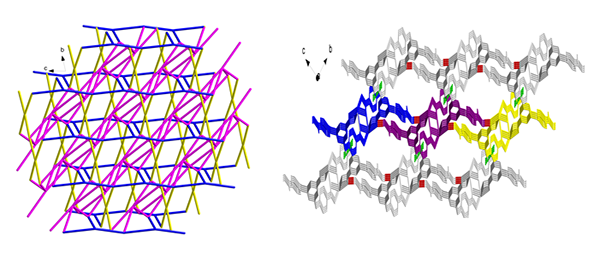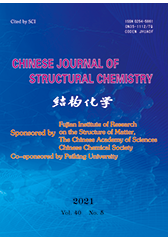Solvothermal Synthesis and Characterization of Two Cd(II) Coordination Polymers with Isomeric Multi-carboxylate Ligands
CAI Hua*, LI Na, LI Yan and AN Dong-Min
Chin. J. Struct. Chem. 2021, 40, 637-645 DOI: 10.14102/j.cnki.0254-5861.2011-2995
May 15, 2021
isomeric, semirigid multicarboxylate, photoluminescent properties
ABSTRACT
In this work two isomeric semi-rigid multi-carboxylate
ligands 3,5-bi(3-carboxyphenoxy)benzoic acid (3-H3BCP),
3,5-bi(4-carboxyphenoxy)benzoic acid (4-H3BCP) and two rigid ligands
(bis-triazole 4-(4-(4H-1,2,4-triazol-4-yl)phenyl)-4H-1,2,4-triazole (L1),
2-(1H-pyrazol-3-yl)pyrazine (L2)) have been employed to react with
Cd(II) salts under similar solvothermal reactions. Two novel Cd(II)
mixed-ligand coordination polymers, namely, {[Cd3(3-BCP)2(L1)]·3H2O}n (1) and [Cd(4-HBCP)(L2)]n (2), have been isolated. 1 displays a rare 2D cluster-based
network while 2 displays a 3D supramolecular
network through weak interactions. Solid-state luminescent properties and
thermal analyses of 1 and 2 also have been determined, indicating
strong fluorescent emissions and good thermal stabilities. Different
coordination modes of two semi-rigid multi-carboxylate ligands and L1 and L2 also have been briefly discussed, which also reveal the great
potential in the construction of these novel mixed-ligand luminescent
frameworks with diverse structural motifs and unique functional properties.








